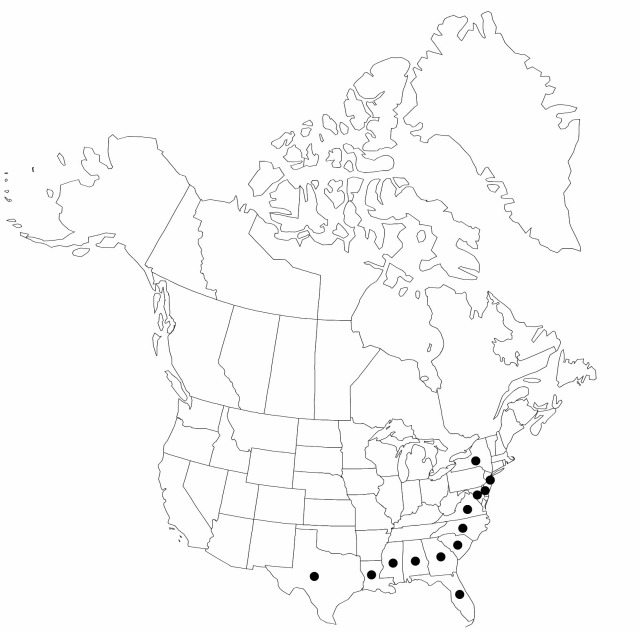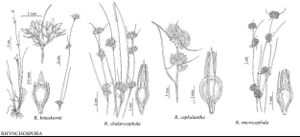Difference between revisions of "Rhynchospora cephalantha"
Ann. Lyceum Nat. Hist. New York 3: 218. 1835.
FNA>Volume Importer |
imported>Volume Importer |
||
| (6 intermediate revisions by 2 users not shown) | |||
| Line 6: | Line 6: | ||
|place=3: 218. 1835 | |place=3: 218. 1835 | ||
|year=1835 | |year=1835 | ||
| + | }} | ||
| + | |special_status={{Treatment/ID/Special_status | ||
| + | |code=F | ||
| + | |label=Illustrated | ||
| + | }}{{Treatment/ID/Special_status | ||
| + | |code=E | ||
| + | |label=Endemic | ||
}} | }} | ||
|basionyms= | |basionyms= | ||
| Line 11: | Line 18: | ||
|name=Rhynchospora cephalantha var. attenuata | |name=Rhynchospora cephalantha var. attenuata | ||
|authority=Gale | |authority=Gale | ||
| − | }}{{Treatment/ID/Synonym | + | |rank=variety |
| + | }} {{Treatment/ID/Synonym | ||
|name=Rhynchospora cephalantha var. pleiocephala | |name=Rhynchospora cephalantha var. pleiocephala | ||
|authority=Fernald & Gale | |authority=Fernald & Gale | ||
| + | |rank=variety | ||
}} | }} | ||
|hierarchy=Cyperaceae;Rhynchospora;Rhynchospora cephalantha | |hierarchy=Cyperaceae;Rhynchospora;Rhynchospora cephalantha | ||
| Line 29: | Line 38: | ||
|elevation=0–200 m | |elevation=0–200 m | ||
|distribution=Ala.;Del.;Fla.;Ga.;La.;Md.;Miss.;N.J.;N.Y.;N.C.;S.C.;Tex.;Va. | |distribution=Ala.;Del.;Fla.;Ga.;La.;Md.;Miss.;N.J.;N.Y.;N.C.;S.C.;Tex.;Va. | ||
| − | |discussion=<p>North American plants referred to Rhynchospora axillaris (Lamarck) Britton [Phaeocephala axillare (Lamarck) House by N. L. Britton and A. Brown (1913) and J. K. Small (1933)] are actually R. cephalantha. A photograph of the type specimen of Schoenus axillaris Lamarck (from P) reveals what appears to be an immature top of S. glomeratus [R. glomerata (Linnaeus) Vahl].</p> | + | |discussion=<p>North American plants referred to <i>Rhynchospora</i> axillaris (Lamarck) Britton [Phaeocephala axillare (Lamarck) House by N. L. Britton and A. Brown (1913) and J. K. Small (1933)] are actually <i>R. cephalantha</i>. A photograph of the type specimen of <i>Schoenus</i> axillaris Lamarck (from P) reveals what appears to be an immature top of S. glomeratus [<i>R. glomerata</i> (Linnaeus) Vahl].</p> |
|tables= | |tables= | ||
|references= | |references= | ||
| Line 38: | Line 47: | ||
-->{{#Taxon: | -->{{#Taxon: | ||
name=Rhynchospora cephalantha | name=Rhynchospora cephalantha | ||
| − | |||
|authority=A. Gray | |authority=A. Gray | ||
|rank=species | |rank=species | ||
| Line 52: | Line 60: | ||
|publication title=Ann. Lyceum Nat. Hist. New York | |publication title=Ann. Lyceum Nat. Hist. New York | ||
|publication year=1835 | |publication year=1835 | ||
| − | |special status= | + | |special status=Illustrated;Endemic |
| − | |source xml=https:// | + | |source xml=https://bitbucket.org/aafc-mbb/fna-data-curation/src/2e0870ddd59836b60bcf96646a41e87ea5a5943a/coarse_grained_fna_xml/V23/V23_365.xml |
|genus=Rhynchospora | |genus=Rhynchospora | ||
|species=Rhynchospora cephalantha | |species=Rhynchospora cephalantha | ||
Latest revision as of 20:40, 5 November 2020
Plants perennial, cespitose, 40–100(–150) cm; rhizomes absent. Culms arching, leafy, obscurely and convexly trigonous, multi-ribbed, slender to stoutish. Principal leaves overtopped by culm; blades linear, flat proximally, 1.5–3 mm wide, apex tapering, trigonous. Inflorescences: spikelet clusters 3–several, widely spaced, often equidistant, mostly hemispheric to globose, occasionally lobed, 1–2 cm thick; bracteal leaves much exceeding subtended inflorescence. Spikelets dark red-brown to dark brown, lanceellipsoid to ellipsoid, 4–5(–6) mm, apex acute; fertile scales elliptic, 3–3.5(–4.5) mm, apex acute, midribs 3, laterals indistinct. Flowers: perianth bristles 6, reaching tubercle tip, retrorsely (rarely antrorsely) barbellate. Fruits 1(–2) per spikelet, 3.5–4(–4.2) mm; body brown with pale center, obovoid distal to stipe, lenticular, 2–2.3 × 1–1.5(–2) mm; tubercle triangular-subulate, (1–)1.5–2 mm, at least 0.5 mm wide at base.
Phenology: Fruiting summer–fall.
Habitat: Sandy silts, sands, and peats of shores, boggy streams, seeps, savannas, and savanna bogs
Elevation: 0–200 m
Distribution

Ala., Del., Fla., Ga., La., Md., Miss., N.J., N.Y., N.C., S.C., Tex., Va.
Discussion
North American plants referred to Rhynchospora axillaris (Lamarck) Britton [Phaeocephala axillare (Lamarck) House by N. L. Britton and A. Brown (1913) and J. K. Small (1933)] are actually R. cephalantha. A photograph of the type specimen of Schoenus axillaris Lamarck (from P) reveals what appears to be an immature top of S. glomeratus [R. glomerata (Linnaeus) Vahl].
Selected References
None.
